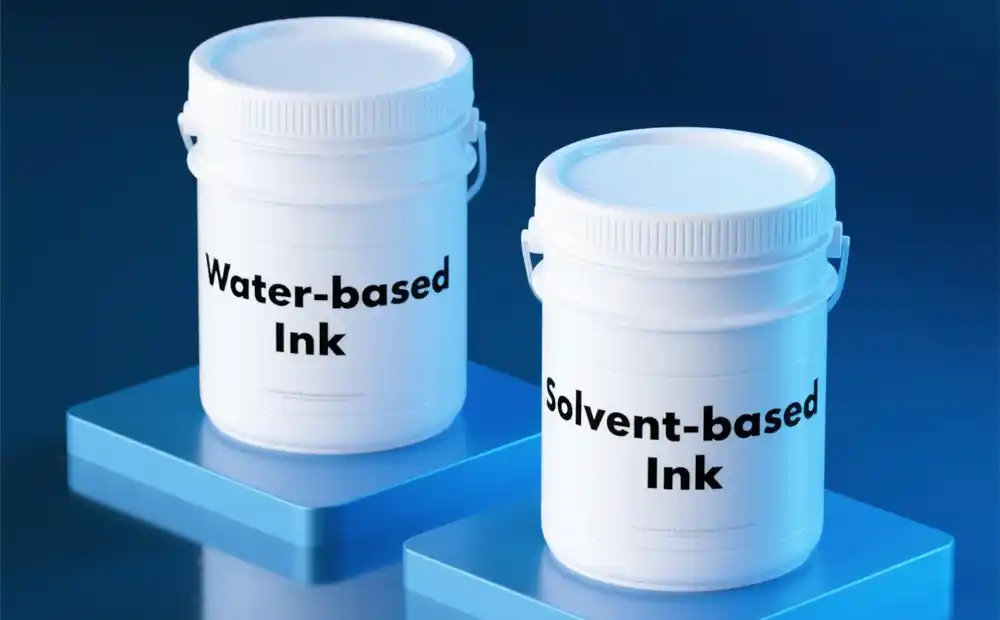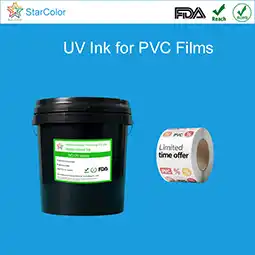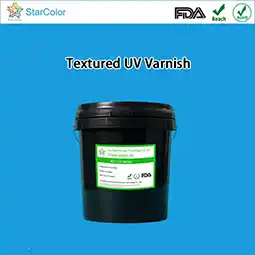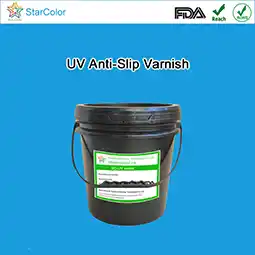Water Based vs. Solvent Flexo Inks: Print Quality Comparison
Date: Aug 06 2025 From: Star Color Views:
I. Differences in Saturation, Gloss, and Stability
Color is the most intuitive reflection of printing quality. Variations in pigment dispersion and film formation between the two inks directly impact the final color effect.1. Color Saturation and Gamut Range
Solvent-based flexo inks use volatile organic solvents (such as ethyl acetate and butyl acetate) as carriers. Pigments disperse more uniformly in organic solvents with less agglomeration, resulting in dense film formation after printing. Their color saturation is typically 5%-10% higher than that of water-based inks. Practical data shows: when printing a red spot color on the same substrate (BOPP film), solvent-based inks achieve a color density (OD value) of 1.8, compared to 1.5-1.6 for water-based inks.Water-based inks, due to the high polarity of water, struggle to fully disperse some organic pigments and require more dispersants, which may slightly reduce color density. However, next-generation nano-scale water-based inks, using 0.1-0.3μm pigment grinding technology, have narrowed the gamut gap with solvent-based inks to within 3%, enabling equivalent substitution in scenarios like food packaging where ultra-high saturation is not required.
2. Gloss Performance
Solvent-based inks form a smooth surface after drying, with gloss levels (measured at 60°) typically reaching 60-80GU, especially on film substrates where they produce a noticeable mirror effect. Water-based inks, which rely on water evaporation for film formation, may experience slight shrinkage during drying, resulting in gloss levels of 40-60GU and a more natural matte finish.To enhance gloss, water-based inks can be modified with polyurethane gloss-enhancing resins, increasing gloss to 70GU at a slight cost increase (approximately 5%-8%). Tests by a cosmetic packaging company showed that after switching to gloss-enhanced water-based inks, gloss improved from 45GU to 68GU, approaching the 72GU level of solvent-based inks.
3. Color Difference Stability
Solvent-based inks are less affected by environmental conditions, with intra-batch color difference (ΔE) typically ≤1.2 and inter-batch ΔE ≤1.8. Water-based inks are sensitive to temperature and humidity—for every 10% fluctuation in humidity, color difference may increase by 0.3-0.5ΔE. Strict workshop environmental control (temperature 23±2℃, humidity 50±5%) is required to stabilize inter-batch color difference at ΔE ≤2.0.In high-humidity environments (e.g., southern China’s rainy season), water-based inks in uncontrolled workshops may exhibit color differences up to ΔE=3.0, while solvent-based inks remain stable at ΔE=1.5 or lower. This explains why solvent-based inks are still used in humid regions.

II. Differences in Adhesion and Abrasion Resistance
The bonding strength between ink and substrate directly determines the durability of printed products, with each ink type performing differently on various materials.1. Film Substrates (BOPP/CPP/PET)
Organic solvents in solvent-based inks slightly dissolve film surfaces, creating an "anchoring effect." Adhesion tests (ASTM D3359 cross-cut method) reach 4B-5B, and abrasion tests (300 rubs under 500g load) show no significant ink loss.Water-based inks rely on physical adsorption between resins and substrates, resulting in weaker adhesion to non-polar films (e.g., BOPP) at only 2B-3B without treatment. Corona treatment (surface tension ≥38dyn/cm) or adding adhesion promoters can improve this to 4B, but abrasion resistance remains slightly inferior (minor local fading after 300 rubs).
2. Paper Substrates (Kraft Paper/Coated Paper)
Water-based inks excel on paper: the porous structure of paper rapidly absorbs water, and ink resins penetrate to form "mechanical locking," achieving 5B adhesion. Rub tests (50 repeated folds) show no delamination.Solvent-based inks on paper are prone to "strike-through" (visible patterns on the back) due to excessive penetration, with a strike-through rate of up to 30% on thin paper (basis weight <60g/㎡), compared to ≤5% for water-based inks.
3. Special Substrates (Aluminum Foil/Metallized Film)
Aluminum foil has a smooth, low-polarity surface. Solvent-based inks achieve 3B-4B adhesion due to strong solvent permeability. Water-based inks require specialized aluminum foil formulas (with titanate coupling agents) to avoid "ink peeling"; optimized formulations can reach 3B adhesion but still require avoiding severe bending.III. Differences in Drying and Smudge Resistance
Drying speed and smudge resistance directly affect printing efficiency and finished product qualification rates, with variations stemming from carrier volatility.1. Drying Speed
Organic solvents in solvent-based inks (e.g., ethyl acetate) evaporate quickly: under 60℃ drying conditions, surface drying takes only 0.5-1 second, and complete drying <3 seconds, enabling printing speeds of 300-400 meters per minute.Water-based inks rely on water evaporation, with drying speed highly dependent on humidity: at 50% humidity, surface drying takes 1-2 seconds, and complete drying 5-8 seconds, resulting in printing speeds typically 20%-30% lower than solvent-based inks (approximately 200-300 meters per minute). However, combining "infrared + hot air" drying systems can bring water-based ink drying speeds close to solvent-based levels, with a 15% increase in energy consumption.
2. Smudge Resistance and Rewinding Stability
Solvent-based inks form a hard film after drying (pencil hardness 2H), exhibiting excellent smudge resistance during rewinding with a scrap rate <1%.Water-based inks form a softer film (pencil hardness HB) and are prone to "blocking" if not fully dried. In high humidity, smudge-related scrap rates may reach 3%-5%. Solutions include reducing rewinding tension (from 50N to 30-35N) and adding anti-blocking agents (e.g., silica micropowder), which can control scrap rates within 1.5%.
IV. Differences in Precision and Dot Performance
In fine pattern printing (e.g., small text, gradient dots), the dot reproduction capabilities of the two inks differ significantly.1. Dot Gain
Solvent-based inks have stable viscosity (25-35cps) and transfer uniformly on high-line anilox rollers (600-800 lines/inch), with actual dot gain for 50% dots controllable at 8%-10%.Water-based ink viscosity is highly temperature-sensitive (viscosity decreases by 10% for every 5℃ temperature rise), leading to greater dot gain fluctuations. Typically, 50% dot gain ranges from 12%-15%, requiring precise temperature control (±1℃) and hourly viscosity adjustments to limit fluctuations to ±2%.
2. Small Text and Line Clarity
For printing text <2pt, solvent-based inks achieve over 90% edge clarity due to fast drying and thin films (1-2μm).Water-based inks may suffer from "blurring" if not properly controlled. Using low-viscosity formulations (20-25cps), 800+ line anilox rollers, and sharp-edge doctor blades (55° angle) can improve small text clarity to 85%, meeting basic requirements for scenarios like food labels.
V. Environmental Compliance: A Hidden Factor Affecting Quality
While environmental performance is not a direct printing quality metric, non-compliance can lead to product scrapping, indirectly impacting "quality stability."Solvent-based inks have high VOC emissions (typically >300g/L) and are prone to excessive solvent residues in food and pharmaceutical packaging (national standard requires <5mg/m²). One company once incurred losses of approximately $17,143 due to batch scrapping from excessive solvent residues.
Water-based inks have VOC emissions <50g/L with negligible solvent residues, making FDA and REACH certifications easier to obtain. They offer greater quality stability in export packaging.
VI. Application Scenario Summary: A Decision Guide
| Printing Quality Dimension | Advantages of Solvent-Based Flexo Inks | Advantages of Water-Based Flexo Inks |
|---|---|---|
| Color Performance | High saturation, high gloss needs (cosmetic packaging) | Natural matte finish, environmental compliance needs (food packaging) |
| Adhesion & Abrasion Resistance | Non-polar films, outdoor weather resistance (agricultural packaging) | Paper substrates, rub resistance needs (paper bags/boxes) |
| Drying & Efficiency | High-speed printing, humid environments (southern film printing) | Medium-speed printing, controlled drying conditions (northern workshops) |
| Precision | <2pt text, complex dots (electronic labels) | Regular graphics, gradient effects (daily necessities packaging) |
| Environmental Compliance | Non-direct contact packaging (industrial packaging) | Food/pharmaceutical direct contact packaging |
Conclusion: Balancing Choices Amid Technological Advancements
As water-based ink technology advances, the quality gap with solvent-based inks is narrowing, enabling equivalent substitution in most conventional printing scenarios. The key decision factor lies in core priorities: solvent-based inks remain preferable for ultimate stability and precision with low environmental requirements; water-based inks are a more sustainable choice when environmental compliance is prioritized, with acceptable minor increases in process control costs.It is recommended that companies conduct small-batch test prints (focusing on color difference stability and adhesion), and make decisions based on substrate type, workshop environment, and specific needs. For customized ink solutions, [apply for sample testing] to receive targeted quality optimization recommendations.
 RU
RU EN
EN CN
CN















